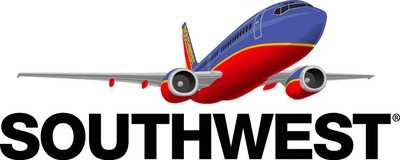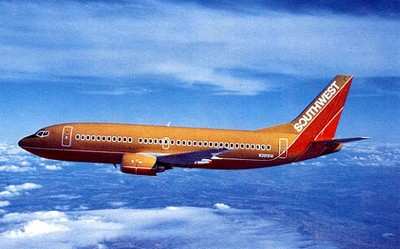Mon, Apr 04, 2011
Cracks on Two Planes Require Additional Maintenance
The media feeding frenzy that started over this week's emergency
landing of an elder Boeing 737-300 is likely to go on for a while.
While the aircraft involved made a safe landing in Yuma after first
descending at a rapid rate to get to a breathable ambient pressure,
evidence continues to mount that this aircraft may have had visible
issues prior to the actual failure. NTSB spokespersons have
confirmed that the aircraft involved showed evidence of previous
damage while two other SWA B737s (all of the 300 variant) were
reported to require 'additional repairs.'

According to Southwest Airlines, their inspection of the 737-300
fleet revealed the following:
- In cooperation with Boeing, an additional inspection program
was set up for a subset of the Southwest 737-300. The inspection
involved a non-destructive test (NDT) in the form of High-Frequency
Eddy current of the aircraft skin. This test is designed to detect
any subsurface fatigue in the skin that is not visible to the
eye.
- As of 4 p.m. Central time Sunday, 19 planes had undergone the
intense inspection with no findings, and those planes have been
returned to service.
- In two other airplanes, the testing did detect small,
subsurface cracks. Further evaluation and potential repairs will be
necessary before those planes are returned to service.
- Inspections of the remaining aircraft in the sub-fleet (79
total) will continue for the next few days. As inspections are
completed with no findings, those planes will continue to be put
back into service today and Monday. The airline anticipates
completing the inspections by late Tuesday. The 79 aircraft
designated for the additional inspections were designed differently
in the manufacturing process.
- Southwest continues its cooperation to the ongoing
investigation being led by the National Transportation Safety Board
(NTSB) into the cause of the hole in the airplane which diverted to
Yuma, AZ, on Friday, April 1.
- Sunday, Southwest expects to cancel approximately 300 flights
while the inspections are ongoing. Customers should continue to
check flight status at www.southwest.com
for any changes to their flights as a result of inspections and
out-of-service aircraft.
Southwest continues to try and put a good spin on things with
statements like, "I could not be more proud of our Maintenance and
Engineering professionals who supported Boeing and the FAA in the
establishment of these new inspection procedures," said Mike Van de
Ven, Southwest's Executive Vice President and Chief Operating
Officer. "Boeing has since identified an inspection program for
this section of the aircraft. Based on this incident and the
additional findings, we expect further action from Boeing and the
FAA for operators of the 737-300 fleet worldwide."

SWA B737-300
At the same time, SWA has had problems in this arena before and
the cry for additional FAA oversight of this and other airplanes is
increasing. Southwest notes that it operates a total 737 fleet of
548 planes and that "the fleet is constantly undergoing rigorous
checks and inspections as directed by the FAA and Boeing, the
aircraft manufacturer. These checks and inspections are dictated by
number of cycles (a cycle is a takeoff and landing) and on a
calendar basis as well."
"Our highest priority is the safety of our Employees and
Customers," Van de Ven said. "Prior to the event regarding Flight
812, we were in compliance with the FAA-mandated and
Boeing-recommended structural inspection requirements for that
aircraft. What we saw with Flight 812 was a new and unknown issue.
We regret any Customer inconveniences as a result of the
inspections currently underway. Delays and cancellations are never
the preference, however we are taking every precaution we can to
ensure that our operation is safe."
More News
From 2014 (YouTube Version): Innovative Aerodynamic Technologies Produce Game-Changing Results At the NBAA 2013 convention, ANN CEO and Editor-In-Chief, Jim Campbell had a chance t>[...]
“This plan opens insurance options to a much wider variety of Canadian aviators across the country who have otherwise had more challenges with securing insurance coverage... >[...]
Taxi The movement of an airplane under its own power on the surface of an airport (14 CFR section 135.100 [Note]). Also, it describes the surface movement of helicopters equipped w>[...]
Aero Linx: The Vertical Flight Society (VFS) The Vertical Flight Society, formerly the American Helicopter Society, is the non-profit technical society for the advancement of verti>[...]
Also: Sustainable Aircraft Test Put Aside, More Falcon 9 Ops, Wyoming ANG Rescue, Oreo Cookie Into Orbit Joby Aviation has reason to celebrate, recently completing its first full t>[...]
 Classic Aero-TV: Active Winglets -- Tamarack Aerospace Partners with Cessna
Classic Aero-TV: Active Winglets -- Tamarack Aerospace Partners with Cessna Aero-News: Quote of the Day (05.03.25)
Aero-News: Quote of the Day (05.03.25) ANN's Daily Aero-Term (05.03.25): Taxi
ANN's Daily Aero-Term (05.03.25): Taxi ANN's Daily Aero-Linx (05.03.25)
ANN's Daily Aero-Linx (05.03.25) Airborne 05.02.25: Joby Crewed Milestone, Diamond Club, Canadian Pilot Insurance
Airborne 05.02.25: Joby Crewed Milestone, Diamond Club, Canadian Pilot Insurance




